Loganair: The airline that survived 60 years of turbulence
- Published
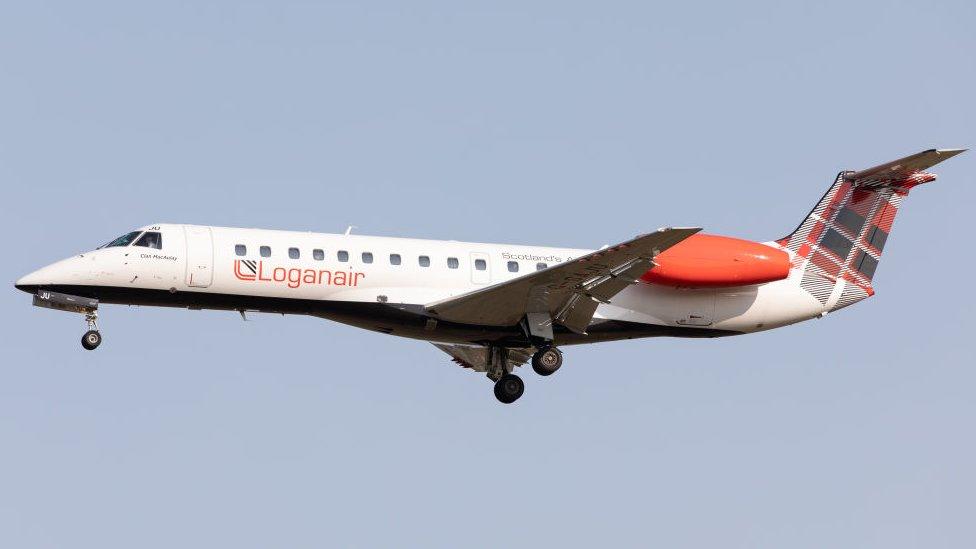
Loganair has outlasted dozens of British airlines since it was founded 60 years ago, but it's been a bumpy ride along the way.
When Willie Logan took over a tiny air taxi firm in 1962, he probably had no idea that it would grow over time to become the UK's biggest regional airline.
The acquisition allowed the Muir of Ord-born businessman to travel around the country visiting building projects run by his civil engineering firm.
Renaming the company Loganair, he became the proud owner of one aircraft - a Piper Aztec - based at Renfrew Airport.
But it didn't take long for the business to take off.
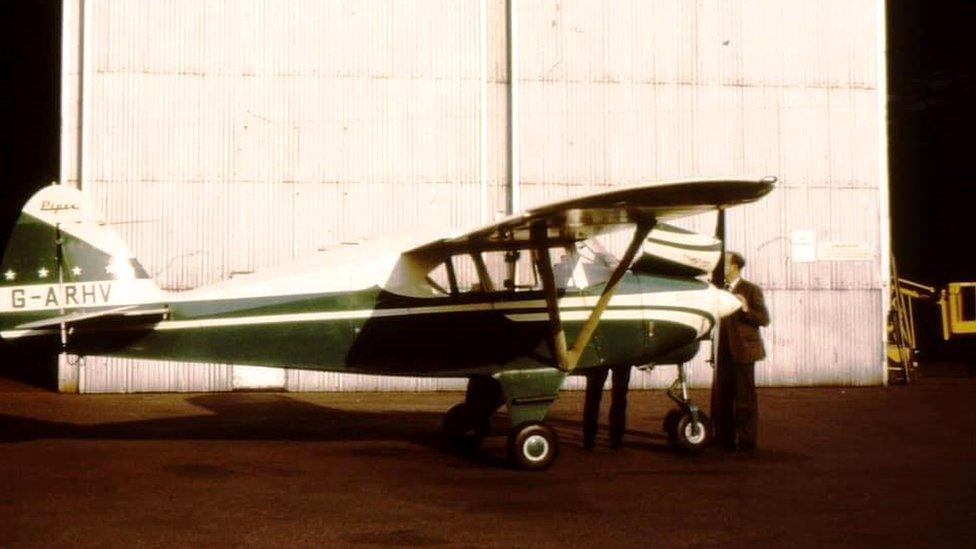
Loganair's first aircraft was this Piper Tripacer
In October 1963, Loganair's first scheduled flight took place between Dundee and Edinburgh's Turnhouse Airport, catering for contractors working on the Tay Road Bridge.
A year later, the airline won a contract to deliver newspapers and prescription drugs to the Western Isles.
It was the start of what was to become a growing list of lifeline routes, including air ambulance services, for some of Scotland's most remote communities.
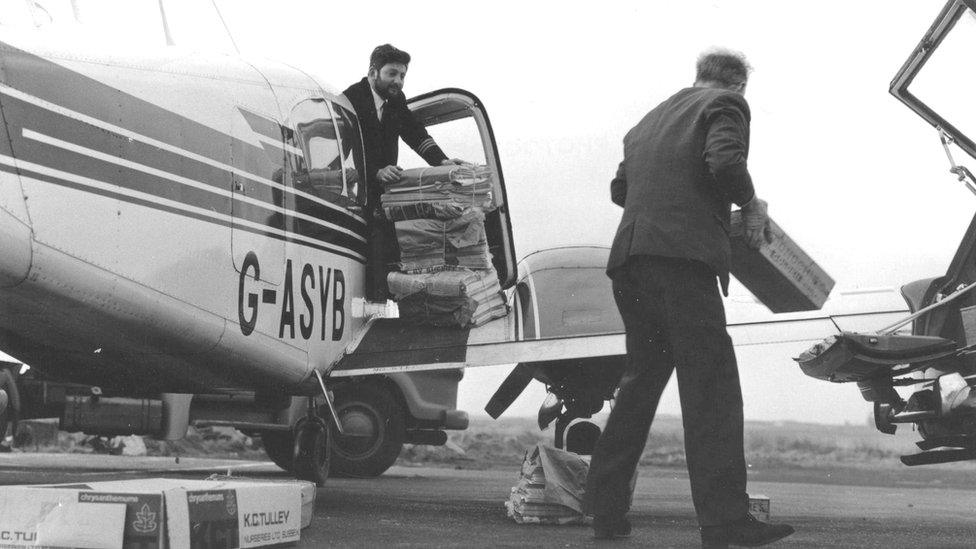
Loganair pilot Geoff Rosenbloom is seen dropping off newspapers in Stornoway in the 1960s
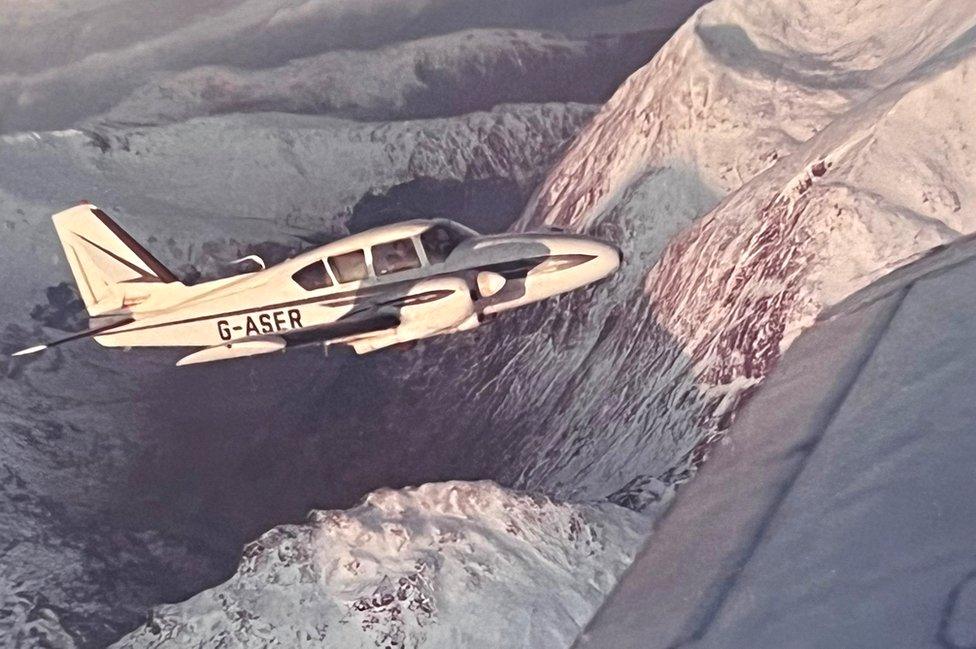
One of Loganair's earliest aircraft was this Piper Aztec, which was bought new in 1963
But just as the airline was building up its reputation, disaster struck.
In 1966, Mr Logan was killed in a plane crash near Inverness while flying with another airline.
His death threatened to throw the aviation business into a tailspin until it was taken over by the National Commercial Bank of Scotland in 1968.
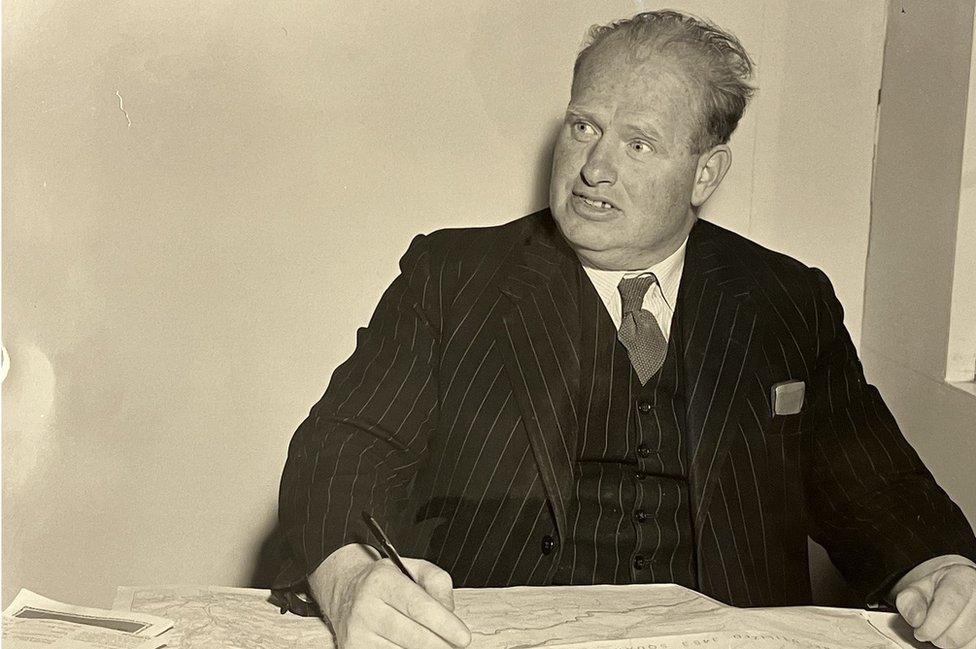
Loganair founder Willie Logan died in a plane crash in 1966
However, despite the shock of the loss of its founder, the airline continued to thrive.
In 1967 Loganair launched the Orkney Inter Isles service, connecting mainland Kirkwall to the smaller islands, and three years later started flying to the Shetland Isles.
Over the next few decades, the company grew to operate flights throughout the Highlands and Islands.

Unusual cargo
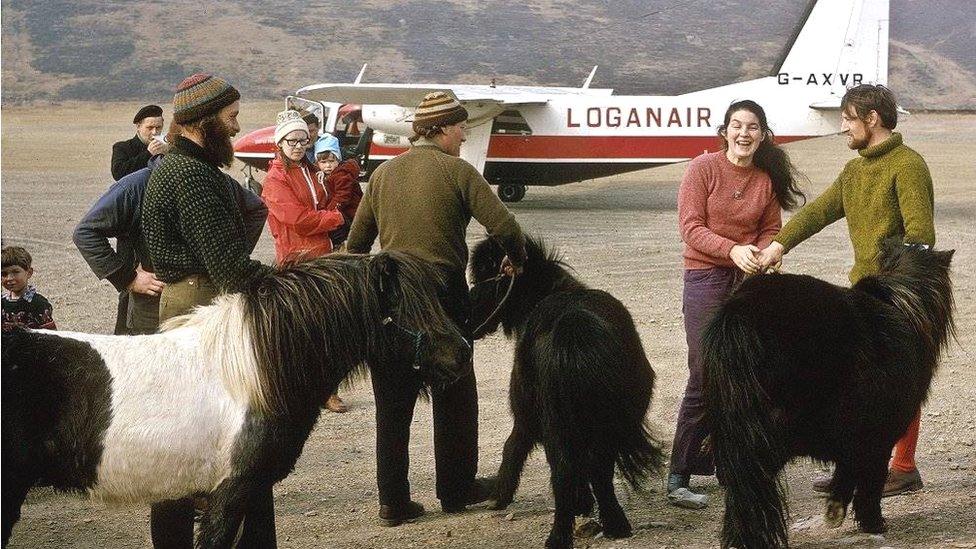
In 1976, Loganair flew several Shetland ponies to Fair Isle after 80 years of their absence on the island.
Sheep have also taken to the skies with the airline. Veteran pilot Capt Eddie Watt recalls the day he flew a ram lamb from the island of Foula in order to "protect the ewes from an unexpected suitor".
He explains: "With his feet tied together and a black bag tied over his back end, I had to fly him over to the Shetland mainland, where he was picked up by another crofter who had the space to contain him until the time was right.
"He was a good passenger and seemed to enjoy the flight."
Capt Geoff Rosenbloom, who flew with Loganair between 1966 and 1970, vividly remembers the day he flew a coffin from Stornoway.
"As I was flying, I started hearing noises coming from it.
"It was rather disconcerting until I realised that it must have been caused by a change of pressure in the plane. It was an odd experience."

In 1983, Loganair was acquired by British Midland Airways, which saw the airline's route map expand throughout Scotland, England and Northern Ireland.
By 1990 the airline was operating a fleet of 18 aircraft made up of five different types.
But trouble lay ahead.
A restructuring of British Midlands' parent company in 1993 led to all of Loganair's non-Highlands and Islands routes - and the majority of its aircraft - being transferred to Manx Airlines.
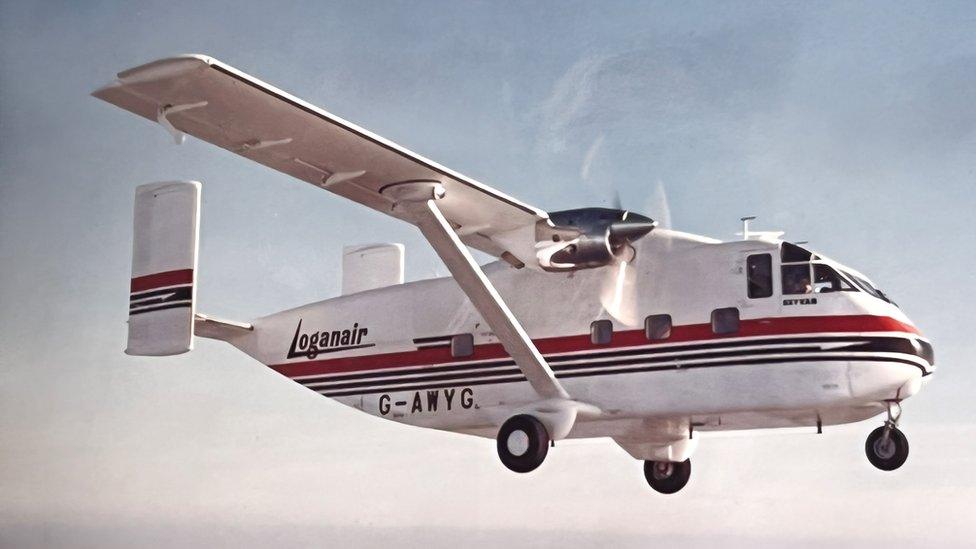
A Sports Skyvan Series 3 plane operated by Loganair from 1969 to 1974
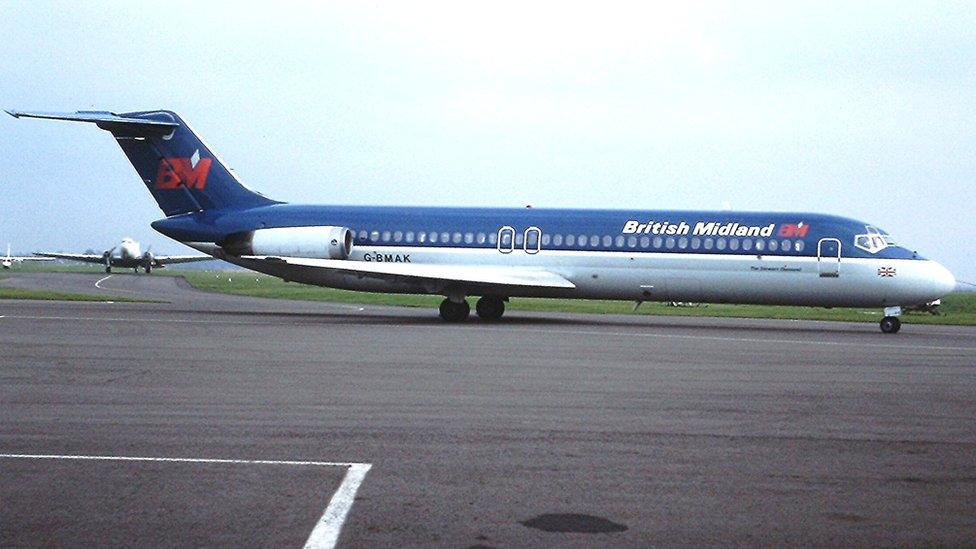
Loganair was acquired by British Midland Airways in 1983
It was left with a fleet of only five Britten-Norman Islanders and a single Twin Otter aircraft.
It took until 1997 for the company's future to be secured when Loganair chairman Scott Grier led a management buyout.
Current Loganair chief executive Jonathan Hinkles has said it was perhaps the closest the airline ever came to extinction.
The airline continued to grow, however. After 14 years as a franchise partner of British Airways, Loganair began a new partnership with Flybe in 2008.
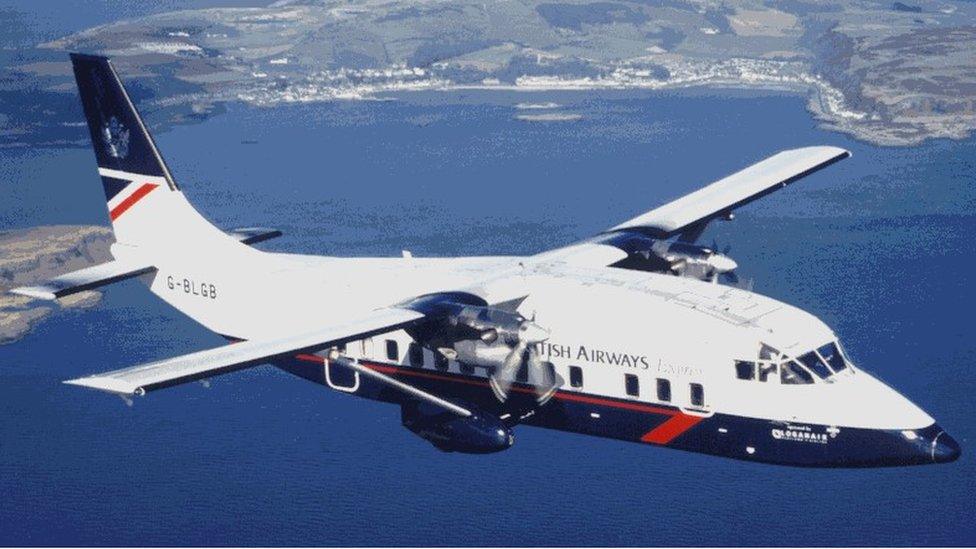
Loganair became a British Airways franchise partner in the 1990s
But in 2015, the airline flew into trouble when concerns about the reliability of Loganair services were expressed in the Scottish Parliament.
Two years later, Flybe terminated its agreement with Loganair, stating that its decision had followed "a failure to agree future operational standards and commercial arrangements".
The split came at a price, with Loganair recording a pre-tax loss of nearly £9m for 2017.
But Loganair was to outlive Flybe, which collapsed in March 2020.

Loganair snippets
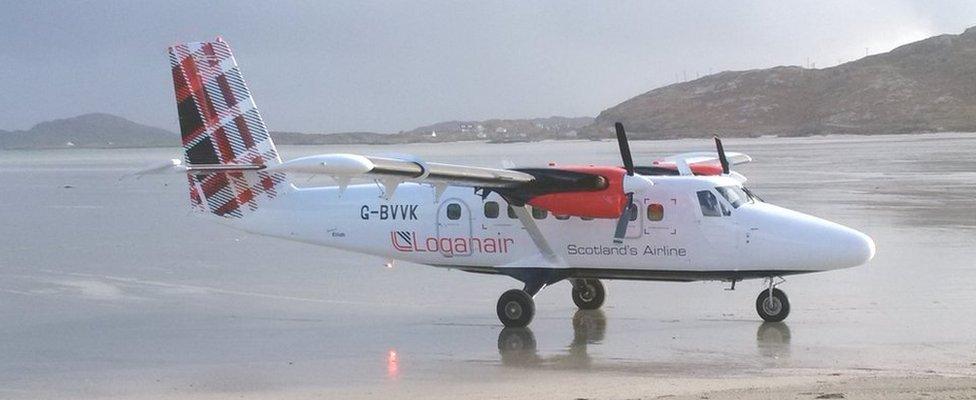
A Loganair aircraft pictured on Barra
The airline lays claim to being the world's only scheduled air service which lands on a beach (Barra)
Two Loganair Saab 340s were used to carry the Olympic Flame on behalf of British Airways ahead of the 2012 London Olympics
Loganair operates the world's shortest scheduled passenger flight - a two-minute hop between the Orkney islands of Westray and Papa Westray

The Scottish airline started to operate some of Flybe's former routes, allowing it to expand its route network to new airports such as Newquay, Southampton, Birmingham and Exeter.
Not even the pandemic managed to kill off an airline which has had more than its fair share of troubles over the years.
While most airlines were grounded as the pandemic ran its course, Loganair continued to transport patients, tests and equipment across Scotland and beyond.
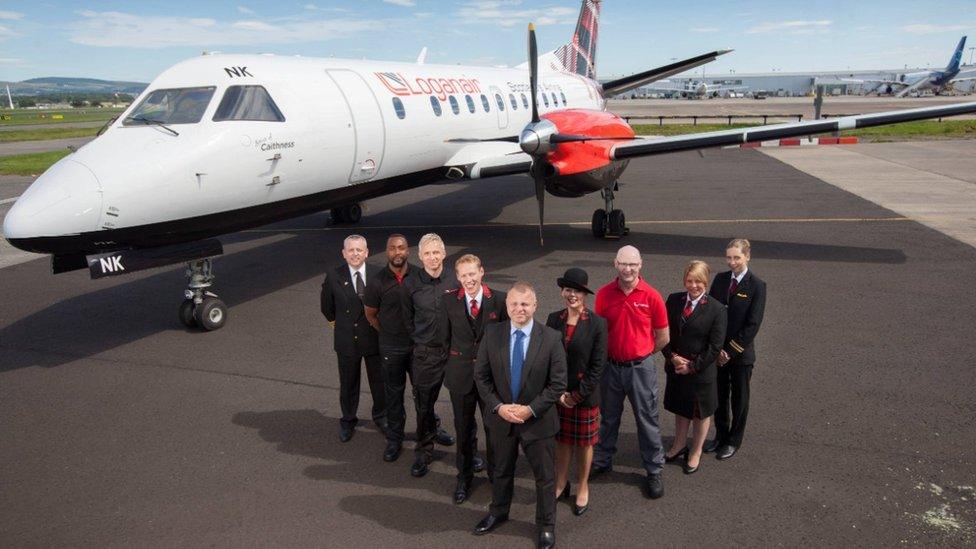
In 2017, Loganair flew once again under its own name for the first time in nearly 25 years
Jonathan Hinkles explains: "The Covid pandemic posed an existential threat to the entire airline industry, but Loganair was one of very few airlines to keep flying throughout. We had a job to do, and we did it.
"At the beginning of the pandemic, I said to our team that I didn't know whether we had a river or an ocean ahead of us to cross, but that we just had to keep swimming until we reached the other side.
"It was only in April of this year - as the final UK travel restrictions and face-covering mandates were lifted - that I felt we could really say we'd reached the other side."
Having flown solo since its split with Flybe, the airline now flies more than 70 routes throughout the UK, Isle of Man, Ireland, Norway and Denmark, and serves 34 UK airports.
It continues to look ahead to the future, having recently announced an order for eight new ATR turboprops.
Old and new footage of two Scottish island airports
Over its 60-year lifespan, Loganair has had five different sets of owners.
It is now looking for its sixth.
In October the airline announced it was looking for a buyer, after its current owners decided to retire.
Mr Hinkles is confident that the Loganair name will live on, whichever company takes it over.
"I think it is one of the enduring strengths of the company, and it is a name synonymous with service to communities.
"Our growth over the last few years hasn't changed or diluted that commitment - it's simply meant that we've been able to bring the same brand of service and ethos to more communities."
- Published4 November 2022
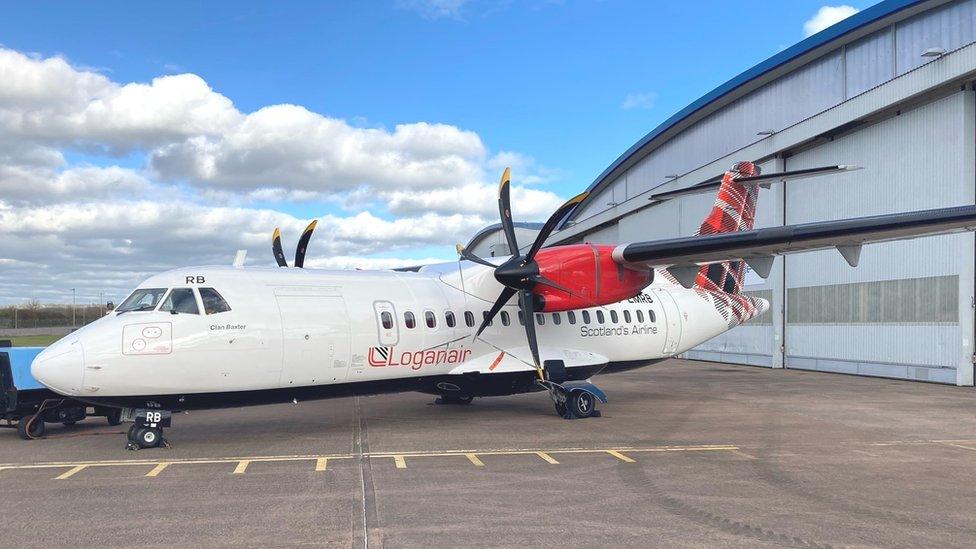
- Published19 October 2022
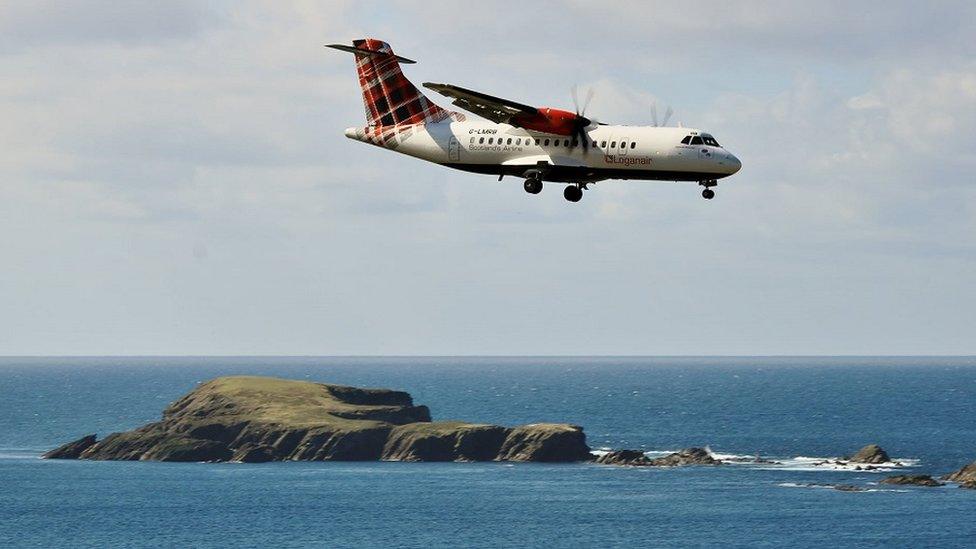
- Published9 October 2022
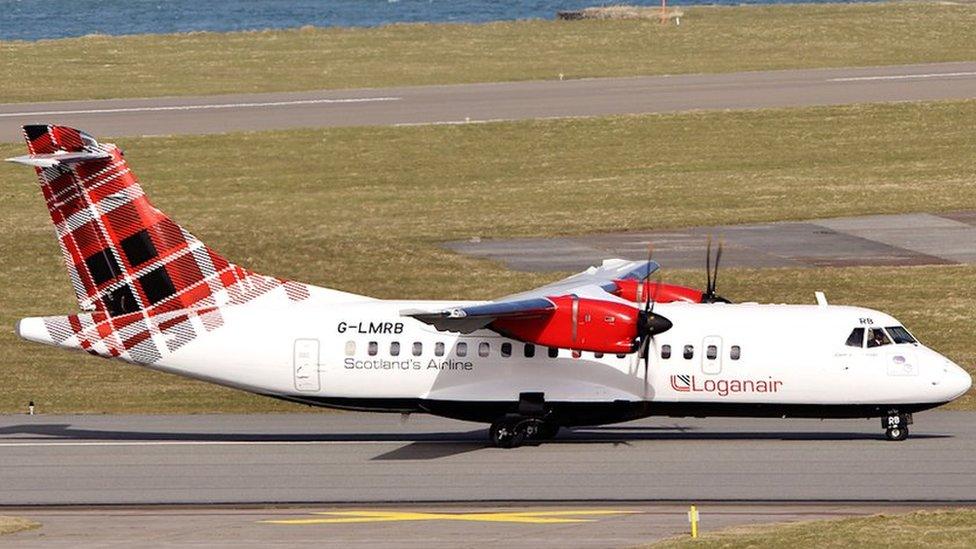
- Published21 November 2016
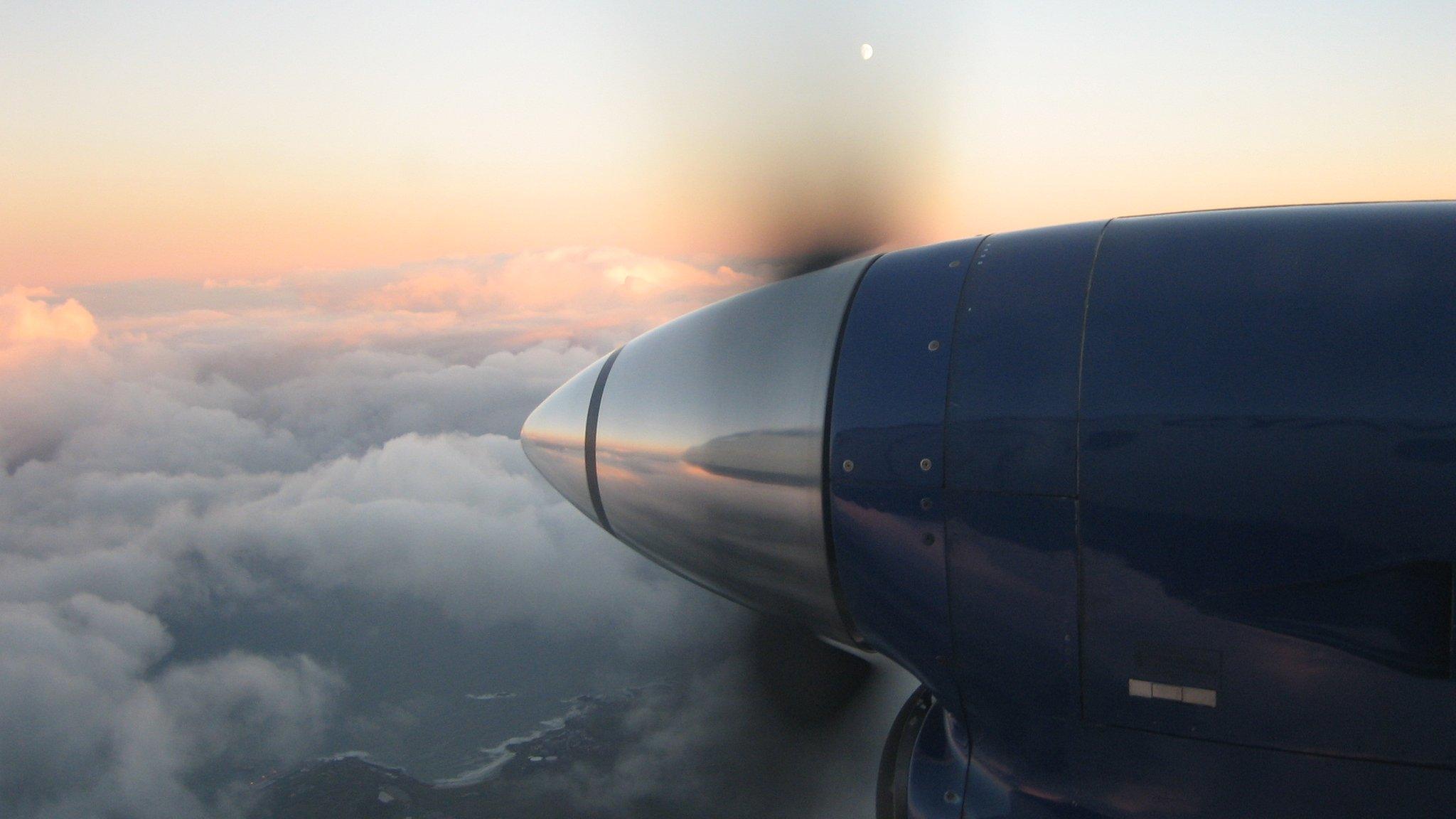
- Published4 November 2016
